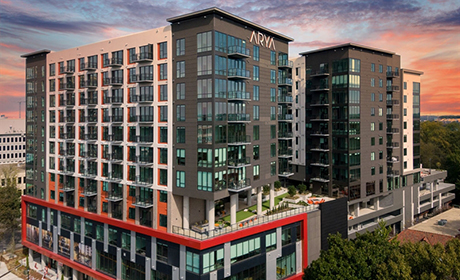Like much of the rest of the country, the Atlanta multifamily market has been white-hot with strong occupancies and rent growth that is contributing to outsized returns for owners, investors and developers. Recent increases in financing costs does not mean the music is stopping, but the tempo is slowing a bit.
Atlanta’s multifamily fundamentals are still outstanding. Occupancies are holding strong and rents are continuing to rise. According to Northmarq’s fourth-quarter 2021 research, occupancy improved by 90 basis points while asking rents spiked by 15.9 percent at year-end.
The compelling story fueling investor interest — growing demand and limited supply of housing options — remains firmly in place. In addition, there is plenty of investor appetite and capital available for multifamily assets for both debt and equity financing. The big change that has occurred over the past several weeks is the increasing cost of debt that will likely take some of the edge off what has been an ultra-aggressive investment sales market.
The 10-year Treasury was 1.73 percent on March 1, 2022. At the end of April, it was 2.91 percent, a 118-basis-point increase in less than two months. Additionally, lender spreads have widened over this same period — 30 to 50 basis points on top of the Treasury widening.
The Federal Reserve introduced a quarter-basis-point increase in mid-March and has provided guidance that it could raise rates six more times this year. At the same time, lenders are reacting to new realities, including inflation and geopolitical issues surrounding Russia’s invasion of Ukraine.
One big question is how higher interest rates might impact property values and pricing. In some cases, Northmarq’s investment sales teams are working with sellers to lower pricing expectations. However, rising rates also have a varied impact depending on a buyer’s capital stack. Those buyers that depend on leverage at 70 percent or more to successfully buy something are the ones that are going to be the most challenged in the near term.
On the other side of the spectrum are buyers that are willing to buy all cash or with very low leverage, thus they are less impacted by higher financing rates. For example, Northmarq’s investment sales team recently closed on a North Carolina apartment property sale that traded for a 3 percent cap rate. In that case, the buyer was willing to be aggressive on price in order to complete a 1031 exchange.
Another byproduct of rising rates is that it might drive more deals to the for-sale market. Owners that have been content to sit on the sidelines and collect revenues rolling in from double-digit rent growth over the past year may see rising financing rates as a catalyst to make a move. Northmarq’s investment sales teams are fielding a surge in BOV (broker opinion of value) requests, with listings up 23 percent.
Some of those properties that come to market won’t necessarily be priced to sell, but there is some incentive to at least test the market with some discretionary sales. That activity could create new opportunities for investors and lenders that are still hungry for multifamily assets.
Buyers and sellers are still in the early days of navigating the shifting rate environment in Atlanta, and in markets across the country. Deals are still trading and new properties are coming to the for-sale market. However, pricing expectations are being lowered to more realistic levels. Stepping back from a “white hot” market to a “hot” market is not necessarily a negative. In fact, it could be a positive for a sales market that was starting to look a bit like the frothy single-family housing market.
Prior to the rate increases, apartment assets that were hitting the for-sale market were experiencing a strong run-up in pricing from competing bidders. In some cases, pricing from the first call for offers to the final round of best-and-final would move as much as 20 percent versus the more typical 2 to 5 percent increase. That level of hyper-activity is not sustainable.
There is some moderation that needed to come back, and we have started to see that occur with higher financing rates being the trigger to make that happen. That shift does not mean the party is over and people are heading for the exits, but the band is playing some slower dance music.
— By Faron Thompson, Regional Managing Director – Debt & Equity, Northmarq. This article was originally published in the May 2022 issue of Southeast Real Estate Business.



